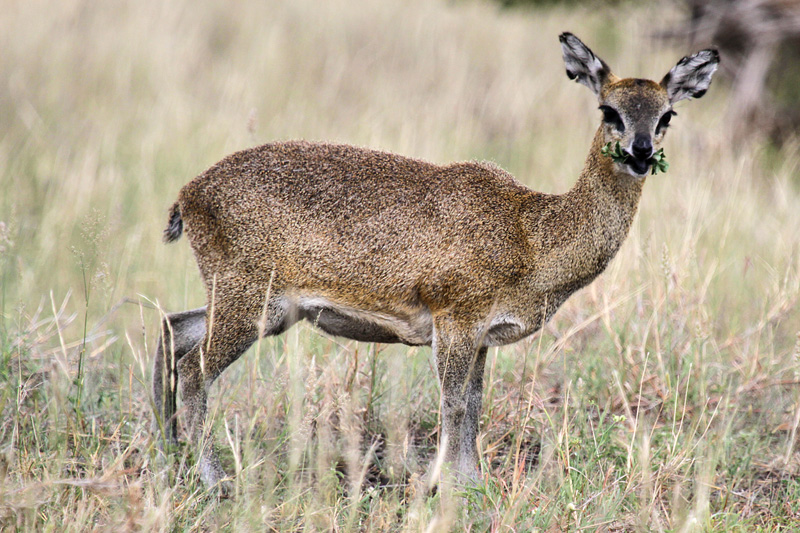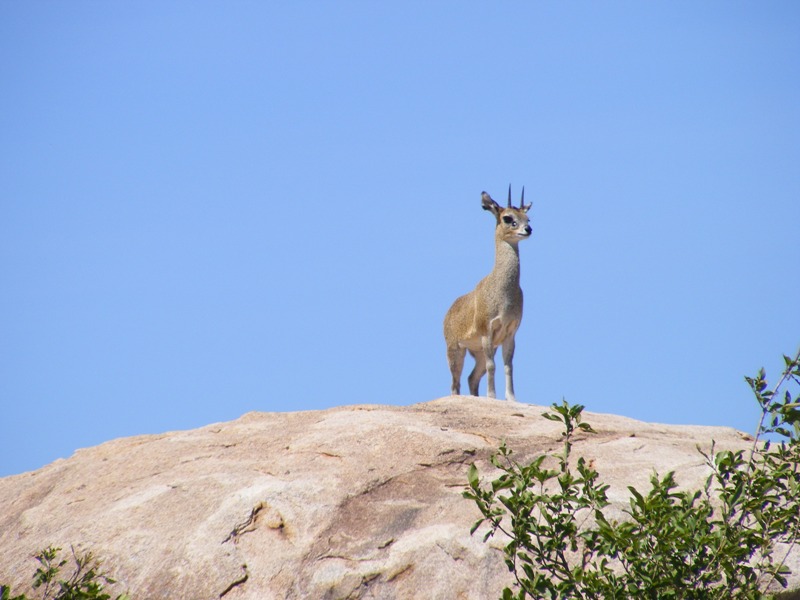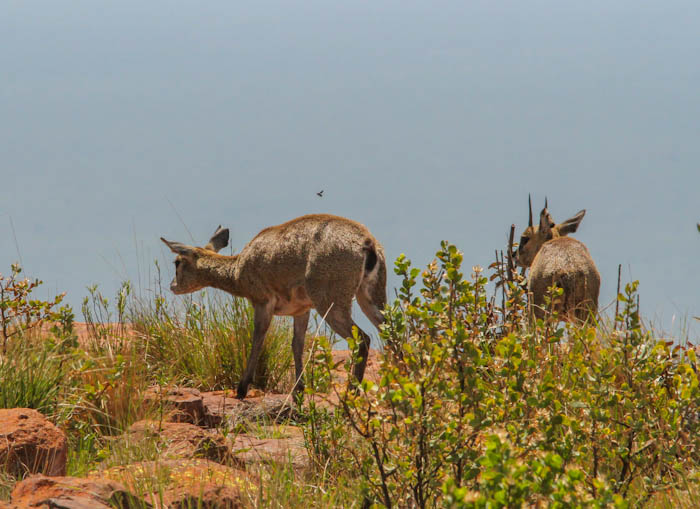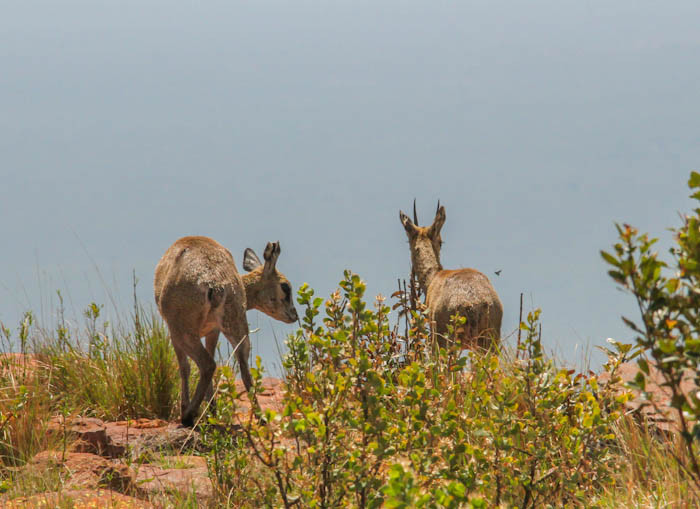[Oreotragus oreotragus]
The name Klipspringer is the Afrikaans for ‘rock jumper’ and alludes to the animal’s ability in rocky territory where it can be seen moving freely, seemingly on tiptoe.
Appearance
Weighing 11-13 Kg and standing 500-600mm high at the shoulders, this is a small and stocky antelope. Ewes are slightly larger than the rams. Only rams have short horns, which are ringed only at the base. Klipspringer have smallish rounded ears positioned far back on the head, and with noticeable dark inner markings. The coarse-haired coat is variable in colour with shades of grey, yellow, brown or red, with marked white underparts, chin and lips. A prominent feature is the large, black pre-orbital gland.
Predators
Leopard, Jackals, and Spotted Hyena prey on Klipspringer. Calves are vulnerable to Eagles and Baboons. Because Klipspringers must often leave their refuges to forage, they are very alert to predators and to alarm signals of other species. They react by fleeing to higher ground with or without first calling, the female leading. Once safe, they give whistling alarm calls in duet.
Diet
Diet consists of the selective browsing of flowers, tender green shoots and fruits of a wide variety of shrubs and herbs. Hardly ever feeds on grass. Not dependent on drinking water.
Breeding
Single lambs are born mostly during spring or summer following a gestation period of six months. Young are evicted from the group after one year, at which stage it has virtually reached maturity.
Behaviour
Rams and ewes form lasting bonds and both sexes defend their permanent territories. At most, groups of up to eight can be seen together, which are probably family groups from neighbouring territories.
Habitat
Klipspringer have a restricted habitat preference, namely to very rocky environments of mountainous areas and koppies. This allows this nimble-footed antelope to escape from its predators.
Where they are found
They are distributed in the following areas in Southern Africa: Zoutpansberg and Lebombo mountain ranges and foothills, along the Kuiseb River in the Namib Desert, lower Orange River, and common in the mountain areas of the Western Cape. Less common in the Drakensberg mountain range.
Vital Statistics
Weight (Female): 11 - 16 kg
Weight (Male): 9 - 12 kg
Length (Female): 82 cm
Length (Male): 82 cm
Gestation Period: 7 months
No of Young: 1 lamb
Order: Artiodactyla
Family: Bovidae
Horns: 10 cm (record - 16 cm)
Breeding: A single young is born anytime during the year after a gestation period of 7 months.
Spoor Description
Klipspringers walk on the tips of their hoofs, which have long, narrow soles and blunt rounded tips. The rounded hoofs are an adaptation to the rocky terrain it inhabits.

(Information from Siyabona Africa)
Female Klipspringer

Male Klipspringer

These two Klipspringers were photographed on the Northern section of the Timbavati Road (S39) high up in the foothills, hiding form the midday sun in the shade of the rocks, October 2013.








